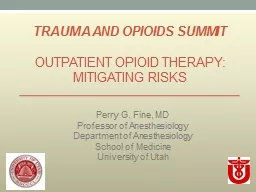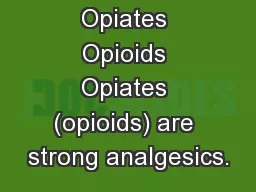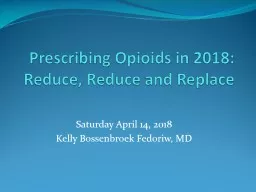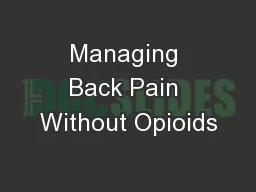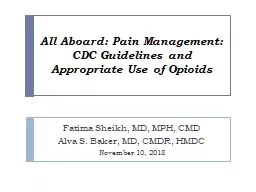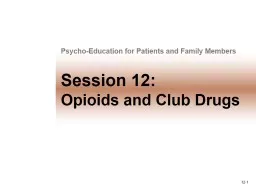PPT-Opioids Part 2 Jed Wolpaw MD,
Author : alexa-scheidler | Published Date : 2018-03-10
MEd Pharmacokinetics Speed of onset is faster with increased lipid solubility Morphine Relatively low lipid solubility Only 1020 unionized at physiologic pH so doesnt
Presentation Embed Code
Download Presentation
Download Presentation The PPT/PDF document "Opioids Part 2 Jed Wolpaw MD," is the property of its rightful owner. Permission is granted to download and print the materials on this website for personal, non-commercial use only, and to display it on your personal computer provided you do not modify the materials and that you retain all copyright notices contained in the materials. By downloading content from our website, you accept the terms of this agreement.
Opioids Part 2 Jed Wolpaw MD,: Transcript
Download Rules Of Document
"Opioids Part 2 Jed Wolpaw MD,"The content belongs to its owner. You may download and print it for personal use, without modification, and keep all copyright notices. By downloading, you agree to these terms.
Related Documents



